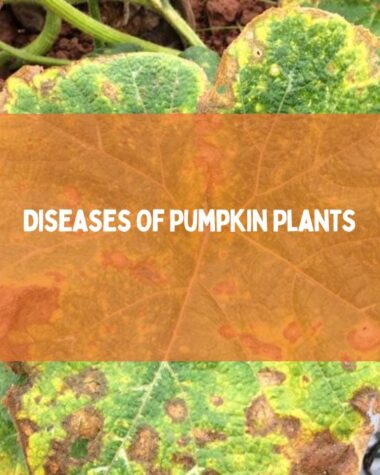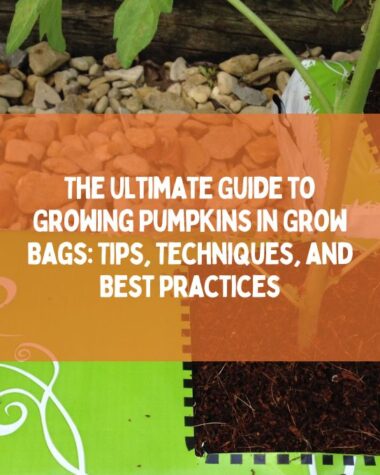Growing pumpkins in limited space somehow its easy or an easy task too. Too grow them, we need container of right size, pumpkin variety, soil, watering, support or pests and diseases on pumpkin plants. By keeping these factors in mind, we will successfully grow pumpkins in limited space.
Whenever we think about large cultivars, we are often reminded of traditional gardens. With a little bit of attention and effort, we can successfully have a bountiful harvest of pumpkins. Pumpkins are a versatile fruit that can serve many culinary purposes other than carving and decoration.
If you are looking to grow succulent squashes for vessel planting, just enough to make pie on Sunday and enjoy a healthy meal with lots of nutritional value, then this article is for you.
Keep reading to have a healthy harvest.
8 Tips To Grow Pumpkin In Limited Space
Growing a pumpkin at first seems like a lot of work, but with just enough effort and motivation, you can harvest freshly homegrown gourds. One can also have a sense of accomplishment when one succeeds in growing them.
Here are eight tips for successfully nurturing a pumpkin vine. If you follow these tips your plant is sure to prosper;
1. Choosing The Right Vessel
Choosing the right container is essential for the successful growth of pumpkin plants. Here are a few things to consider when choosing the right container:
- Size: The receptacle size should be at least 20 to 24 inches deep and 18 to 24 inches wide to provide sufficient space for the pumpkin roots to grow.
- Material: You can choose from a variety of container materials such as plastic, ceramic, or even a grow bag. The material should be sturdy and able to withstand the weight of the soil and the plant.
- Drainage: Make sure the container has drainage holes to allow excess water to drain away. This helps to prevent waterlogging, which can lead to root rot.
By considering these factors, the chances of successful growth are assured.
Related Reading
- How To Keep Bugs Off Pumpkin Plants?
- How To Protect An Overwatered Pumpkin Plant?
- Secret Tips To Grow Pumpkins From Seeds
2. Choosing The Right Variety
Look for pumpkin varieties that are compact and don’t demand a lot of space to grow. The smaller varieties are usually better suited for container growing. Bush varieties are more compact and are better suited for receptacle growing.
Choose pumpkin varieties that produce small to medium-sized fruits, as these will be easier to manage in a container. Some varieties are specifically bred for smaller fruit sizes, such as the “Jack Be Little” or “Wee Be Little” pumpkins.
3. Use Good-Quality Soil
Use good-quality potting soil that is well-draining and rich in organic matter. You can also add some compost to the soil to enrich it further. Use a high-quality potting mix that is specifically formulated for container plants.
This will provide the right balance of nutrients, drainage, and aeration. A good potting mix should contain plenty of organic matter, such as compost, peat moss, or coconut coir. This helps to improve soil structure and water retention.
Good-quality soil will ensure its health and assure a bountiful harvest. Well-draining soil will prevent waterlogging and diseases that decrease its yield tremendously.
4. Plant The Seeds And Water Regularly
Plant the pumpkin seeds about 1 inch deep in the soil, spacing them about 2-3 inches apart. You can plant two to three seeds per pot to ensure that at least one of them germinates. Water the seeds immediately after planting.
But make sure not to overwater, as this can cause the seeds to rot. Once the seedlings emerge, thin them out to leave only the strongest plant per pot. This will help to confirm that the plant has enough space to grow.
Water the pumpkin plant regularly, keeping the soil moist but not waterlogged. A good rule of thumb is to water when the top inch of soil feels dry to the touch.
5. Provide Support For The Plant
Providing support for your potted pumpkin plant is vital to ensure that the vines have something to grow on and to stop the fruits from rotting on the ground. You can create a trellis using bamboo stakes or a wire frame.
Drive the stakes into the soil, and then attach the wireframe or string to create a support structure. As the pumpkin vines grow, gently train them up the trellis. A tomato cage can also be used to support a potted pumpkin plant.
No matter which method you choose, it’s important to provide support for your potted pumpkin plant. Be gentle when tying the vines and make sure not to damage them as you train them to grow up the support structure.
6 . Fertilize Your Pumpkin Plant
Choose a balanced fertilizer with equal amounts of nitrogen, phosphorus, and potassium. This will give the plant the nutrients it needs to grow and produce fruit.
Spread the fertilizer evenly around the base of the plant, making sure not to get any on the leaves or stems. Use a hoe or cultivator to gently work the fertilizer into the dirt.
This will help stave off the fertilizer from burning the roots. Keep an eye on the growth of the plant and adjust the amount of fertilizer as required. Over-fertilizing can lead to excessive growth and poor fruit quality.
7. Pest And Diseases Infestations
Check your plant regularly for signs of pests and diseases. Remove any dead or damaged leaves or stems to deter the spread of diseases. Also, clean up any fallen leaves or debris around the base of the plant.
Pests such as aphids, spider mites, and squash bugs can be controlled by using insecticidal soap or neem oil. Diseases like powdery mildew can be stopped by making sure there is good air flow and not watering from above.
Some companion plants, like marigolds and nasturtiums, can keep pests away while attracting good bugs. Watch out for pests and illnesses and take the necessary steps to control them. This will help your plant grow healthy and strong.
8. Harvesting Your Potted Pumpkin
To determine if your potted squash is ready to be harvested, you need to know that the skin of a mature pumpkin will be hard and the color will be consistent. The stem of a ripe pumpkin will be dry and woody.
Gently press your fingernail into the stem to check if it is dry. Use a sharp knife or pair of scissors to cut the stem of the pumpkin, leaving about 3–4 inches of stem attached to the fruit.
Do not pull the pumpkin off the vine, as this can damage the fruit and the plant. After harvesting, cure the pumpkin by placing it in a warm and dry location for 10–14 days. This will help harden the skin and improve storage life.
Related Reading
- How Proper Eggplant Spacing Can Maximize Your Harvest?
- How To Harvest Cucumbers In Containers?
- Growing Tomatoes in Small Spaces: 6 Best Varieties to Try
Conclusion
Potted pumpkin plants can be grown in a variety of locations, including balconies, patios, and windowsills, making them a great option for those with limited outdoor space. Being able to grow pumpkins in containers is a satisfying experience.
It allows you to explore the further boundaries of planting and gardening. Not only is a new set of skills added to your repertoire, but you also get immense excitement from harvesting, and you learn to enjoy the journey of managing and taking care of your plants.
Thanks for reading!







